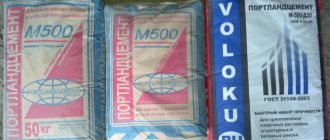September 30, 2021
The road experiences increased traffic loads every day. And there is nothing surprising in the fact that cracks, holes, and chips appear on it. The difficulty is that standard repair methods can only be used in the warm season. And if damage occurs in winter, it is much more difficult to deal with.
This is why cold mix asphalt was developed. This material helps to repair holes, cracks, and other damage at any time of the year, even in frost. We invite you to talk about cold asphalt technology: what it is, what its features are and where it can be used.
Cold and hot asphalt: what is the difference between technologies
The composition of the cold and hot mixtures is almost the same, with the exception of some nuances. For example, a cold mixture contains solvents, which make the bitumen liquid and suitable for repairs in the cold season. Solvents interact with plasticizers and trigger the process of evaporation of hydrocarbons, which, in turn, affects the bitumen.
The mixture contains crushed stone. But these are usually small stones, which, due to their fine fraction and specific shape, are better compacted.
Cold asphalt concrete is suitable for working at low air temperatures. It does not need to be heated or compacted using expensive equipment. Hot asphalt cannot be laid at low temperatures.
Polymerization.
The final technological stage in the production of cold asphalt after mixing crushed stone with bitumen is the addition of a special additive.
The volume of special additive in the production of the mixture is 25...35% of the weight of bitumen.
The amount of additive used in the mixture determines the duration of storage of cold asphalt, while maintaining all its properties.
The additive can be added to the mixture using dosing units that are used for adhesives.
The additive must be supplied to the mixer separately. Mixing the additive directly with bitumen is not permissible.
The mixing time of the mixture is 20...25 seconds, after which the cold asphalt mixture is ready for use.
The use of modifiers allows bitumen to retain its properties without polymerizing for a long time in the open air.
The polymerization process of bitumen begins during work. When exposed to the atmosphere, the polymer substances that formed the protective film are destroyed.
This material is produced using several technologies:
1. Without heating, adding bitumen additives as a binder allows you to produce a mixture without heating; the composition made using this technology gives better adhesion to the surface, even when wet, and does not require cooling after preparation. 2. With heating, in this case the mixture is made using the same technology as hot asphalt. Mineral fillers undergo a drying process and are heated to 110 degrees, then bitumen is added to the mixture, after mixing, the finished composition with a temperature of 105 degrees is sent for cooling to 25 degrees and then packaged in containers for sale. The finished mixture can be stored, depending on storage conditions and the types of bitumen used, from two weeks to six months. At positive temperatures, the mixture can be stored in the open air, outdoors.
What is cold asphalt and what does it consist of?
To understand what cold asphalt is and what are the features of its use, you need to know its composition. The difference between a hot and cold mixture lies in the ratio of components and some features of their use.
Includes:
- Crushed stone. Usually this is gray and black crushed stone in the form of small fractions. The material is thoroughly washed to ensure good adhesion during installation.
- Liquid bitumen. To ensure that the mixture can be laid in frost without problems, only liquid bitumen is used.
- Specially purified sand.
- Plasticizers. They create a film on the surface of the crushed stone, which does not allow the hydrocarbon to evaporate until the material is laid.
- Solvent. Plays the role of a catalyst that provokes the evaporation of hydrocarbons.
For reference!
Each manufacturer decides for himself in what proportion to mix the elements and what additives to use. All this affects the quality of the mixture and the future surface.
Compound.
The composition of cold asphalt is, in fact, not much different from hot asphalt.
The difference lies in the addition of special substances (modifiers) that prevent the bitumen from hardening.
This is very important for using the ready-made mixture.
Thus, a certain plasticity is achieved, allowing the resulting mixture to work for a long time.
Comparing the characteristics of cold and hot asphalt
| Material | Temperature of the mixture during installation | Minimum air temperature during installation | Hardness and strength | Moisture resistance | Price |
| Cold asphalt | +5 degrees | up to –30 degrees | Average | Average | Expensive |
| Hot asphalt | +110–130 degrees | up to –5 degrees | High | High | Cheaper |
Summarize. Cold asphalt concrete can be used all year round, even when temperatures drop to -30 degrees, and the process is as simple as possible. However, the coating is less strong, durable and moisture resistant than in the case of the hot laying method.
Crack resistance of asphalt
Like frost resistance, this property is especially important during cold periods. It characterizes the ability of a material to resist cracking.
The fact is that the integrity of asphalt under mechanical loads largely depends on its ability to deform. If it is high, the material will compress, stretch and bend without breaking. But at temperatures below -15-20°C (-30°C for modified compositions), bitumen becomes brittle and brittle.
Cracks in road surfaces vary in origin:
- Technological Appear due to violations during asphalt laying.
- Strength The coating cracks under the influence of loads exceeding the design ones.
- Reflected Formed above seams and cracks in the underlying layers of the base.
- Fatigue They develop after several years of road operation due to the fact that the quality characteristics of asphalt deteriorate over time.
- Temperature Arise due to internal stresses caused by sudden temperature fluctuations and uneven cooling of the coating.
To assess crack resistance, in accordance with GOST 9128-2013, the indicator of ultimate tensile strength during splitting is used.
The standard establishes the following limits of permissible values:
- For grade I asphalt – from 3.0 to 6.5 MPa
- For grade II asphalt – from 2.5 to 7.0 MPa
- For grade III asphalt – from 2.0 to 7.5 MPa
The appearance of cracks in asphalt is a serious defect. Through them, water, dirt, aggressive chemicals and plant seeds enter the road surface. Therefore, the task of road engineers is to design the most crack-resistant asphalt concrete mixture composition.
The following methods are used for this:
- Increasing the proportion of crushed stone
- Use of low viscosity bitumen
- Use of polymer-bitumen binder (PBB)
- Adding crumb rubber from recycled tires
- Addition of carbon black, which slows down the aging of bitumen
And if it was not possible to prevent the occurrence of damage, they must be promptly eliminated. For this purpose, bitumen emulsions and bitumen-mineral mixtures are used, as well as asphalt sealants.
You can read more about this property in our article Crack resistance of asphalt.
Advantages and disadvantages of cold asphalt
Like any technology, cold paving has its strengths and weaknesses. Let's look at them in more detail.
Advantages
- Quick styling. Laying a path or asphalting driveways for cars can take no more than half an hour. First you need to prepare a “trough”, and then distribute the mixture and compact it. You can use either a manual vibratory roller or your own car. Crushed stone does not stick to the wheels.
- Ready for use. If hot asphalt needs to be heated to 130 degrees, and then maintain this temperature until asphalting is carried out, then here you simply take a bag, pour out the mixture and tamp it.
- No need for a skating rink. We have already said that you can even use your own car for compaction or do everything manually.
- Laying in frost. The temperature may drop to -30 degrees, but this will not interfere with repair work or installation. The main thing is that there is no snowfall or rain outside.
- Easy storage. You can store the mixture at any temperature for up to 2 years. If the bag has not been opened and is stored at room temperature, the shelf life will increase to 10 years, depending on the manufacturer.
- Special skills may not be required. The technology is so simple that anyone can try themselves as a road builder.
- High degree of security. When laying hot asphalt you have to work with a hot mixture, but with cold asphalt there is no danger of getting burned.
Still, cold mixtures are used less often than hot ones. There are several reasons for this, which are disadvantages:
Flaws:
- Low mechanical strength. Even if you use a roller for compaction, the surface will be less reliable. With the constant movement of heavy trucks, such a road will “spread” to the sides. Liquid bitumen cannot provide the same mechanical strength as hot mixes.
- Difficult installation requirements. Before filling the mixture, you need to carefully remove dust from the surface of the hole or crack. The less dust, the better the adhesion, and vice versa. Before you decide to make the final choice between cold and hot laying methods, ask how to lay cold asphalt and what difficulties are associated with it, or better yet, contact a professional.
- The high cost and poor technical characteristics in terms of transport load make the mixture a rare guest in ordinary construction stores. Items are rarely in stock and you usually have to wait for delivery.
- Short service life. The road surface lasts half as long as a hot-paved surface.
For reference
! Cold asphalt cannot be used as the main material for paving roads. But it will come in handy when you need to restore the road surface in difficult weather conditions and in a short time.
Shelf life.
The ready-mixed cold asphalt has a long shelf life of 10 months to 1 year.
When working, no special surface preparation or use of tools and equipment for repairs is required.
Restoration of road surfaces can be carried out in subzero temperatures.
This property allows it to be used in areas with cold climates.
The mixture is made using high-strength fine-grained crushed stone, previously cleaned and subjected to intensive drying.
A mixture of cold asphalt is prepared on special equipment at asphalt concrete plants.
Crushed stone of a certain fraction is mixed in mixers with bitumen added in portions.
The duration of mixing the components of cold asphalt is 20...25 seconds.
Crushed stone fractions are preheated to a certain temperature, but not higher than 100 C.
The volume of bitumen added to the mixture should be from 4.2 to 4.5% of the mass of crushed stone.
Scope of application
The technology can be used to solve the following problems:
- pothole repair (mainly in winter);
- urgent restoration of a small area;
- asphalting garden paths;
- covering local areas with asphalt;
- creation of access roads;
- reconstruction of the canvas after installation of gutters;
- installation of sewer hatches.
Cold asphalt is a way to urgently restore the road surface, including in winter, and is also a suitable material for paving small private areas with light loads.
How to lay cold asphalt: road repair and paving
Cold paving is easier than hot paving. But the technology still has its own nuances that must be taken into account. At the same time, pothole repair and creation of an entire coating will differ.
Scheme of pothole repair:
- Preparing the surface. We remove debris, foreign objects, dirt and dust. Can be used for cleaning with water jet.
- We process the edges. In the area of work, the edges are cut off to increase the adhesion of materials.
- Cover with liquid bitumen. The edges of the hole or crack are treated with bitumen so that the materials are better bonded to each other. The average consumption is 500 ml of bitumen per 1 sq. m.
- Add crushed stone. If the hole is deep - more than 20 cm - it is worth filling it with crushed stone, and therefore with cold asphalt. This will reduce material costs, and the quality will remain high.
- Lay a layer of cold asphalt. It is advisable that after installation the patch protrudes 2 cm above the road surface. During operation, the difference will equalize.
- We seal the patch. To do this, you can use manual equipment, a vibrating roller, or your own transport.
Tamping is done from the edges to the center in a spiral. When the tamping equipment no longer leaves marks on the surface of the coating, the process can be completed. This usually happens after 10 passes.
Now let's figure out how to work with cold asphalt if you are planning to asphalt a path or an entire area from scratch.
Asphalting scheme for local areas:
- Preparing the foundation. We make a depression in the selected area: usually it is enough to remove 10–15 cm of soil.
- We compact the “trough”. A hand tool works well for this.
- Assembling the pillow. First we fill in a layer of sand and compact it, then repeat the same with crushed stone.
- We water the base with bitumen so that it adheres well to the asphalt layer.
- We lay cold asphalt. The material must be carefully leveled.
- Let's start tamping. This can be done with hand tools or with special equipment.
If you are making a site or road that will be frequently used by vehicles, we recommend using geotextiles or geogrid. It is laid between several layers of asphalt mixture. It is not necessary to use reinforcing materials to create pedestrian paths and pave playgrounds.
Preparation of mixtures
Plant for the production of cold asphalt concrete mixtures
The composition of cold asphalt concrete is calculated using the same methods as hot asphalt concrete mixtures. One feature is that to increase caking values, during long-term storage, the volume of petroleum bitumen is reduced by 10–15%.
The production of cold asphalt is carried out in batch concrete mixing units in two ways:
- With heating of mineral components to 80-110°C.
- Without heating - using bitumen emulsions with modifying additives.
Preparation of the asphalt concrete mixture with preheating and drying of the components occurs in the following sequence:
- Cold mineral aggregates enter the drying drum via a conveyor.
- There they are dried, heated to operating temperature (110°C) and fed into a dispensing device.
- From the dispenser, after weighing is completed, they enter the mixer.
- Next, mineral powder heated to a certain temperature is introduced into the dry mortar mixture.
- Mix all components and add hot bitumen.
- Lastly, modifying additives are introduced to extend the shelf life of the finished material.
- Then the finished asphalt (temperature 95-105°C) is transported to the prepared site and mixed using a front loader, which ensures rapid cooling of the mixture to the recommended values (25°C).
- Next, the resulting loose cold mixture is packed into bags or placed in a dump for long-term storage.
Without heating:
- cold sand and crushed stone are dosed and added to the mixer;
- then add a mineral supplement;
- mix everything thoroughly and add cold modified bitumen emulsion;
- They are mixed for 15–20 minutes and shipped to a dump or packaged in prepared containers.
Equipment for laying cold asphalt
Large road equipment is not needed to work with cold mixtures. That is, it is not necessary to pay for the work of an asphalt paver, grader, or heavy vibratory rollers.
In most cases, a hand tool will be sufficient. Only during pothole repairs on high-traffic roads will a road roller be required.
List of tools that may be useful:
- A jackhammer to remove old asphalt. An air compressor to clear the repair area of debris, dirt, and dust.
- Road roller for compacting highways.
- Tool for leveling the mixture.
For simple work on a small-scale suburban area, only hand tools will be sufficient.
Wear resistance of asphalt
Due to friction from vehicle wheels, the asphalt gradually wears away and loses its thickness. This process is called wear.
Its intensity depends on the following factors:
- Ratio of asphalt concrete mixture components Sandy pavements wear out faster than crushed stone pavements.
- Pavement porosity Dense asphalt resists wear better.
- Abrasion of crushed stone Mixtures based on brittle mineral fillers are highly susceptible to wear.
- Adhesion of bitumen to mineral filler The stronger the “grip” of the binder, the stronger it resists tearing out small grains of crushed stone and sand from the asphalt.
- Air temperature In the heat, bitumen softens, and the structural bonds in the material weaken.
- saturation The constant presence of moisture reduces the adhesion of asphalt components and increases its abrasion.
- Intensity and mode of traffic The more cars drive on the road, the faster its surface wears out.
- Using de-icing materials Aggressive chemicals gradually corrode the surface layer of the road.
- Using studded wheels Heavy and sharp studs bite into the road surface and accelerate the rate of wear.
This characteristic is not standardized in the old GOST 9128-2013 for asphalt concrete. However, new standards adopted in 2019-2020 provide for determining the wear resistance of asphalt using the Prall test. This is a test method in which asphalt samples are tumbled using steel balls and their volume loss is recorded.
Based on the results of the experiment, the material is assigned to a certain class:
- Class 1 – abrasion up to 25 cm3 to Prall test
- Class 2 – abrasion from 26 to 35 cm3 to Prall test
- Class 3 – abrasion from 36 to 45 cm3 to Prall test
For roads with difficult driving conditions, it is recommended to use class 1 asphalt, and for normal roads – classes 2 and 3. For other cases, this indicator is not standardized.
Good wear resistance is a prerequisite for creating a reliable and durable coating.
To improve this characteristic, the following methods are used:
- Increasing crushed stone content
- Using high quality filler
- Design of coarse compositions
- Application of adhesive additives
- Bitumen modification
- Treating the coating with protective compounds and creating wear layers
You can read more about this property in our article Wear resistance of asphalt.
Let's sum it up
Now you know everything about how to use cold asphalt. The composition, which includes liquid bitumen and plasticizers, allows you to achieve the required adhesion even in frosts down to -30 degrees, so the mixture is often used for pothole repairs. Due to the ease of installation and good characteristics, such mixtures are widely used in the design of private home areas: arrangement of playgrounds, driveways, paths, parking lots.
There is no single recipe for cold mixture. Each manufacturer decides for himself in what proportions to combine components and what additives to use.
If you need high-quality durable coating, contact us because we:
- We lay out the materials ourselves. We take on both simple projects in private areas, as well as asphalt paving and repair of state roads.
- We work strictly according to GOST. We make sure that the thickness of the laid material corresponds to what we promise to our client.
We also advise you in detail on all issues and help you draw up an estimate for the project!
Frost resistance of asphalt
It characterizes the ability of the coating to withstand repeated freezing and thawing.
There are pores in the thickness of the asphalt through which water gets inside. At temperatures below 0°C, it turns into ice and increases in volume, expanding the coating from the inside. With warming, the ice melts and contracts - the internal pressure in the asphalt concrete drops. And such load changes happen dozens of times during the off-season.
As a result, the bonds between the bitumen and the filler in the asphalt are destroyed, and its structure becomes loose. If a material has low frost resistance, it quickly loses strength, crumbles and cracks.
The frost resistance of asphalt depends on its following indicators:
- Residual Porosity The volume of air voids that remain in a pavement after installation and compaction.
- saturation The amount of water that asphalt can absorb.
- Water resistance The ability of a material to resist the destructive effects of moisture.
The relationship here is this: the more porous the material and the more water it can absorb, the greater the volume of ice formed and the higher the internal loads in the coating.
Although this property is very important, it is not standardized in the current GOST standards for asphalt, and there is no standard method for determining it. But in practice, a method similar to the water resistance test is used.
The procedure looks like this: a sample of asphalt is saturated with water, and then frozen and warmed several times. There may be 25, 50, 100 or more such cycles. The ratio of its compressive strength before and after testing is then calculated for the material. This indicator is called the frost resistance coefficient.
The following values are considered optimal (at 100 cycles):
- For grade I asphalt – 0.85
- For grade II asphalt – 0.80
- For grade III asphalt – 0.75
It is important to determine the property of frost resistance, since almost throughout the entire territory of Russia there are regular transitions from sub-zero to positive temperatures.
You can improve this characteristic in the following ways:
- Use low viscosity bitumen
- Increase the proportion of bitumen in the mixture
- Add adhesive additives to the mixture
- Modify bitumen with polymer and rubber additives
You can read more about this property in our article Frost resistance of asphalt.











